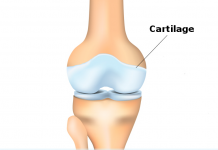Contrary to what happens with most of the other vitamins, the term “Vitamin K” doesn’t refer to a single substance.
Rather, it represents an entire family of fat-soluble molecules that share a common basic chemical structure.
For the sake of simplicity, in this Article, I will narrow them down to two major groups: Vitamin K1 (phylloquinone) and Vitamin K2 (menaquinones).
For many people, Vitamin K is synonymous with phylloquinone or Vitamin K1, which comprises the primary dietary source of this vitamin and is mainly present in green leafy vegetables, e.g. spinach.
On the other hand, Vitamin K2 is a fermentation byproduct, meaning that the menaquinones making up this vitamin group are made by certain bacteria during the fermentation process of some foods, but also inside the gut.
How Does Vitamin K Affect Human Health?
The most studied physiological role of Vitamin K is during the formation of blood clots, also known as the coagulation cascade.
Vitamin K plays a critical role in the activation of coagulation factors II, VII, IX and X, as well as proteins S, C and Z.
This leads to one of the most notable drug-food interactions in medicine, where people who take warfarin or other coumarin-based drugs to prevent deep-vein thrombosis or stroke, need to keep their vitamin K intake steady, as these drugs act by antagonizing it to its receptors, thereby inhibiting its action.
However, recent research has revealed other important roles for both K1 and K2 in human health, with more weight currently placed on the different forms of K2.
In this regard, the most notable health conditions where K2 seems to be crucial are coronary heart disease and osteoporosis.
Menaquinones (especially MK-4 and MK-7) interact with a protein called Matrix Gla-protein, and the result of this interaction is the removal of excess calcium from vascular walls.
Since the calcification of the vesicles has been recognized as an independent risk factor for coronary artery disease, it seems that adequate vitamin K2 intake may play a role in its prevention.
There are some observational data confirming this hypothesis, but results from ongoing studies are pending.
When it comes to bone health, menaquinones have been recently recognized as an important co-factor in the prevention of osteoporosis, along with Vitamin D, Calcium and Magnesium, through their interaction with osteocalcin, a critical building block for bones.
Both MK-4 and MK-7 have been shown to increase bone strength and decrease the rate of hip and other fractures.
As a matter of fact, MK-4 is prescribed for the treatment of osteoporosis in many Asian countries, whereas in Europe the regulatory authority on food safety (EFSA) has approved a health claim regarding the relationship between vitamin K and bone health.
Since there are no known toxicities for either form of vitamin K at any dose, combined with the fact that bioavailability from plant sources is limited, people who are at high risk of coronary heart disease or osteoporosis, or believe that they may benefit from taking these vitamins in any way, and have no other contraindications, may consider supplementation in the form of tablets or capsules.
































